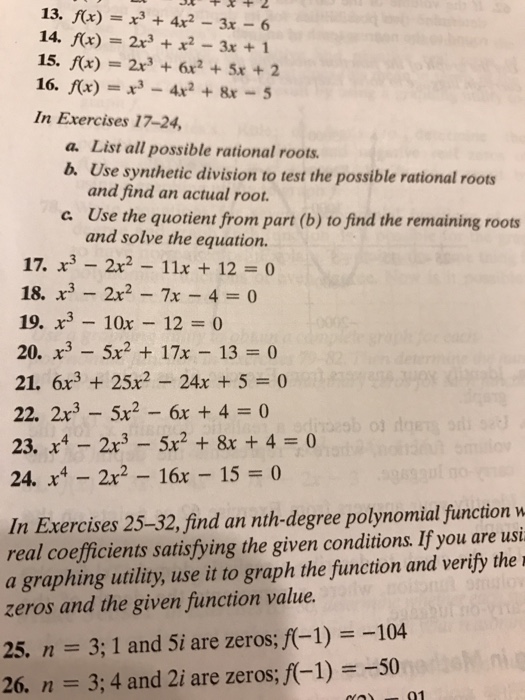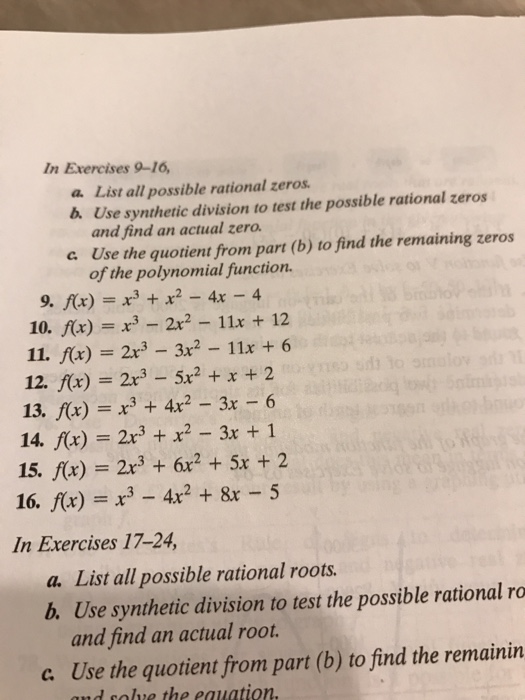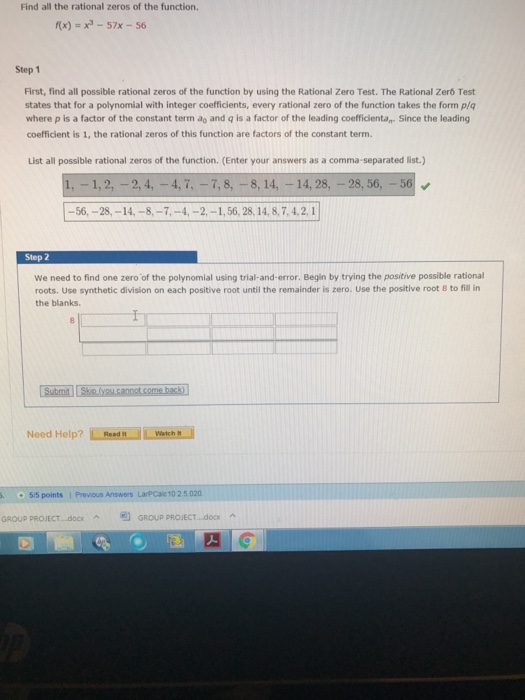Use Synthetic Division To Test Several Possible Rational Zeros
Because x í 2 is a factor of the equation we can use the final quotient to write a factored form as 0 x í 2x2 í x í 12. You create a list of possibilities using the Rational Roots Test.
Solved List All Possible Rational Zeros Use Synthetic Di Chegg Com
And you keep going like this until you get down to a quadratic at which point you use the Quadratic Formula or other methods to get the last two of the original polynomials zeroes.
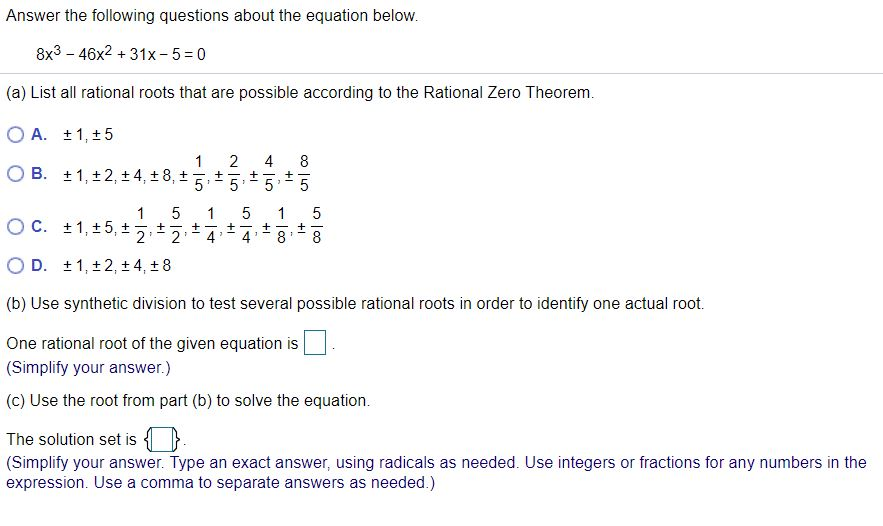
Use synthetic division to test several possible rational zeros. Use synthetic division to test several possible rational zeros in order to identify one actual zero. Use synthetic division to test several possible zeros in order to identify one acual zero. Use synthetic division to test several possible rational zeros in order to identify one actual zero One rational zero of the given function is.
List all rational zeros that are possible according to the Rational Zero Theorem. Learn how to use the Rational Zero Test on Polynomial expression. 1 1 2 7 7 2.
Use the root from part b to solve the equation The solution set is Simplify your answer. Use the zero from part b to find all the zeros of the polynomial function. Type an integer.
Answer by Edwin McCravy18604. List all rational roots that are possible according to the rational zero theorem b. List all rational roots that are possible according to the Rational Zero Theorem 1224 Use commas to separate answers as needed b.
Use synthetic division to test several possible rational roots in order to identify one actual root - one rational root of the given equation is ___ c. One rational zero of the given function is Simplify your answer c. Rational Zero Test or Rational Root test provide us with a list of all possible real Zer.
The lesson helps you understand. Use the quotient from part b t Ask your homework questions to teachers and professors meet other students and be entered to win 600 or an Xbox Series X Join our Discord. Show transcribed image text.
C Use the zero from part b to find all the zeros of the pooynomial function. For comparison here is what the graph looks like. The zeros of the function fx x - 2x² - 9x 18 are Simplify your answer.
To solve a polynomial equation using synthetic division we first use the rational roots theorem to determine the potential zeroes for factoring. There are a couple tricks you can use when working with synthetic division and the Rational Roots Test. Use synthetic division to test the possible rational zeros and find an actual zero.
The corresponding lesson Finding Rational Zeros Using the Rational Zeros Theorem Synthetic Division will help you understand all the intricacies of the concept. 1 Perform the following divisions using Synthetic Division. Multiply and Add Patterns If zero value is a fraction then divide all coefficients by denominator.
By using synthetic division it can be determined that 2 is a rational zero. After factoring we can solve synthetic division polynomials by setting each of our factors equal to the other side of the equation and solving. You then try additional zeroes on the resulting and lower-degree polynomial until something else works.
Use synthetic division to test several possible rational zeros in order to identify one actual zero One rational zero of the given function is Simplify your answer c. Use synthetic division to test several possible rational roots in order to identifly one actual root One rational root of the given equation is Simplify your answer c. Next check the possible roots.
Coefficient is 1 the possible rational zeros are the integer factors of the constant term 24. Algebra QA Library x3-37x60 a. Use the root from part b to solve the equation - the solution set is ___.
Divide 2 x 4 x 3 15 x 2 7 x 7 by x 1. The Rational Roots Test gives the following list of possible zeroes. Use a comma to separate answers as needed.
Use the zero from part b to find all the zeros of the polynomial function The zeros of the function are Simplify your answer. Use the zero from part b to find all the zeros of the polynomial function. If a is a root of the polynomial P x the remainder from the division of P x by x a should equal 0.
The zeros of the function fxx3 -5x2 -9x45 are. You plug various of these possible zeroes into the synthetic division until one of them works divides out evenly with a zero remainder. SYNTHETIC DIVISION WORKSHEET Dont forget ZERO Coefficients for missing degrees Solve the binomial divisor equal to zero.
Find all the roots of 2 x3 7 x2 16 x 6. These are the possible rational roots. Therefore the possible rational zeros are 1 2 3 4 6 8 12 and 24.

Rational Root Theorem Finding Zeros Of A Polynomial Function Use The Rational Zero Theorem To Find All Possible Rational Zeros Use Synthetic Division Ppt Download
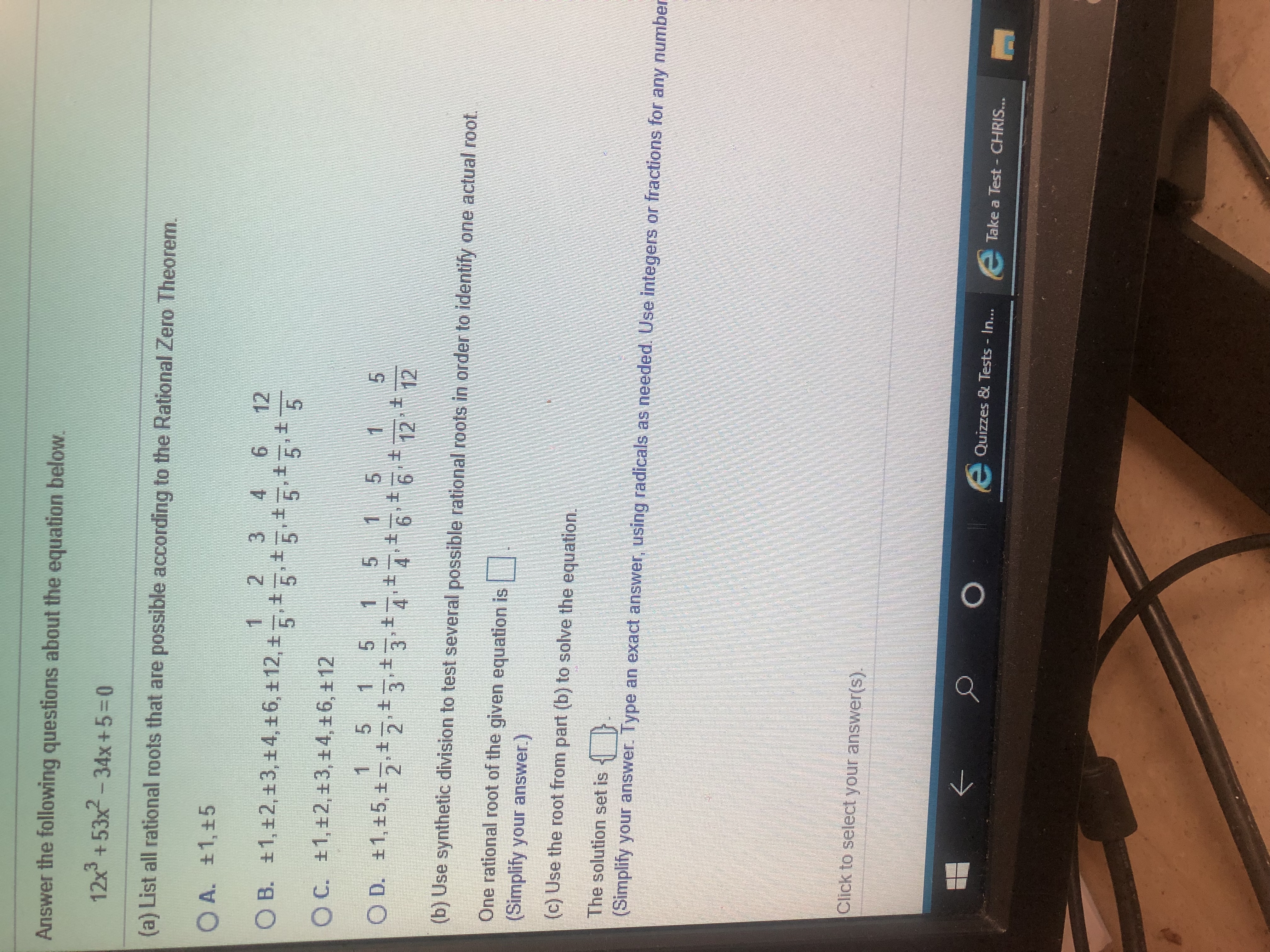
Answered Answer The Following Questions About Bartleby

Rational Zero Test And Synthetic Division To Find All Zero S Youtube

Chapter 3 Polynomial And Rational Functions 3 4 Zeros Of Polynomial Functions Prezentaciya Onlajn

Rational Root Theorem Finding Zeros Of A Polynomial Function Use The Rational Zero Theorem To Find All Possible Rational Zeros Use Synthetic Division Ppt Download

Solved Answer The Following Questions About The Equation Chegg Com
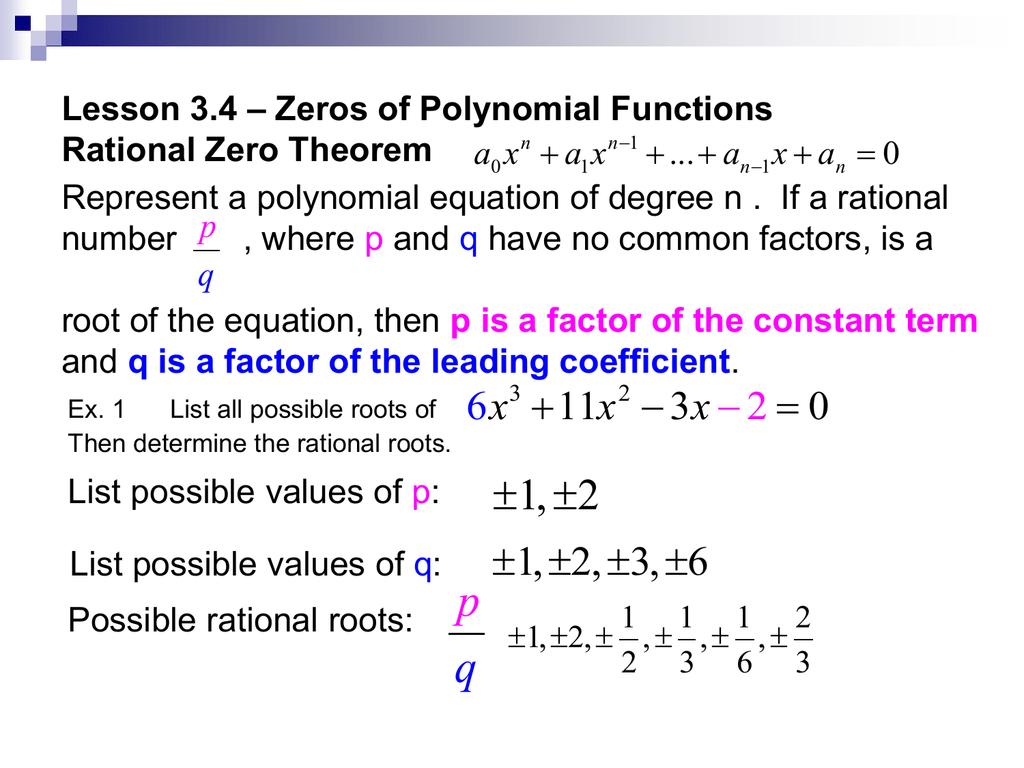
Lesson 3 4 Rational Root Test And Zeros Of Polynomials

7 5 1 Zeros Of Polynomial Functions Ppt Download

Rational Root Theorem Finding Zeros Of A Polynomial Function Use The Rational Zero Theorem To Find All Possible Rational Zeros Use Synthetic Division Ppt Download
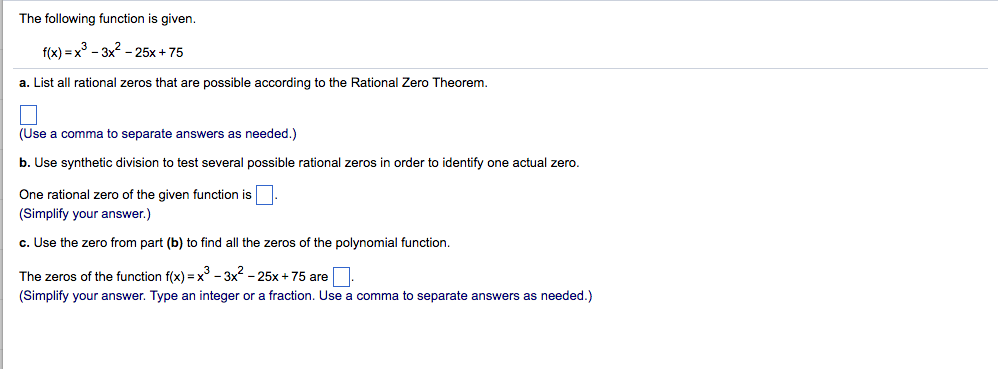
Solved The Following Function Is Given F X X 3 3x 2 Chegg Com
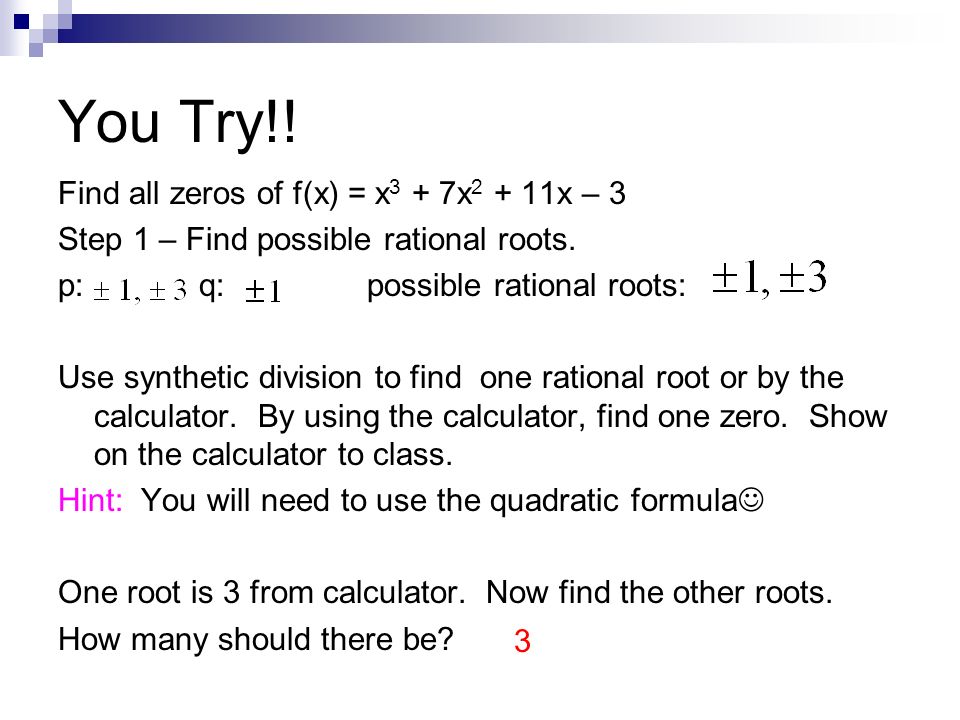
Lesson 3 4 Zeros Of Polynomial Functions Rational Zero Theorem Ppt Download
Solved List All Possible Rational Zeros Use Synthetic Di Chegg Com
Solved Find All The Rational Zeros Of The Function F X Chegg Com

Algebra 2 6 07a The Rational Zeros Theorem Part 1 Youtube
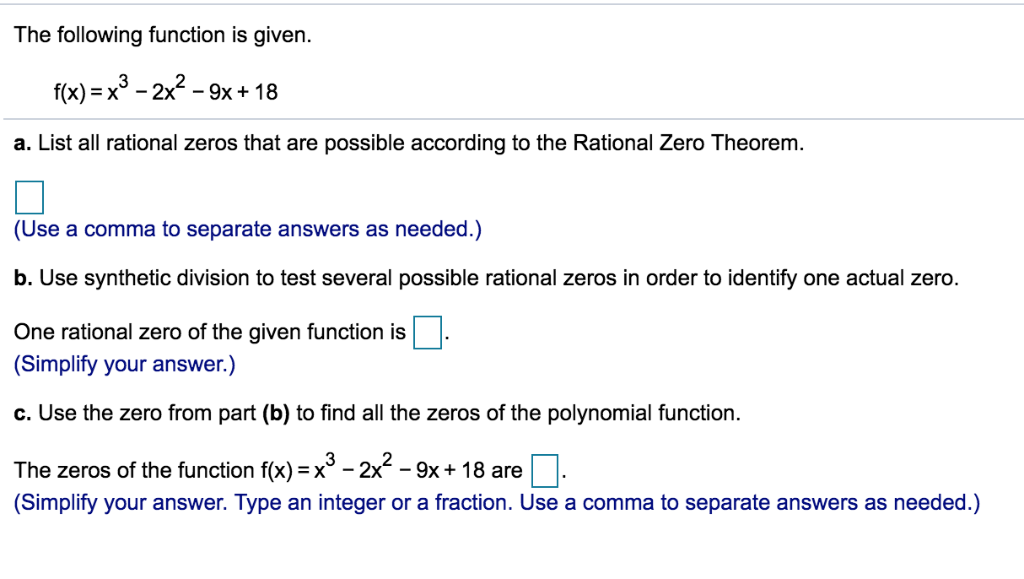
Solved The Following Function Is Given F X X3 2x2 9x Chegg Com

5 6 Find Rational Zeros Youtube
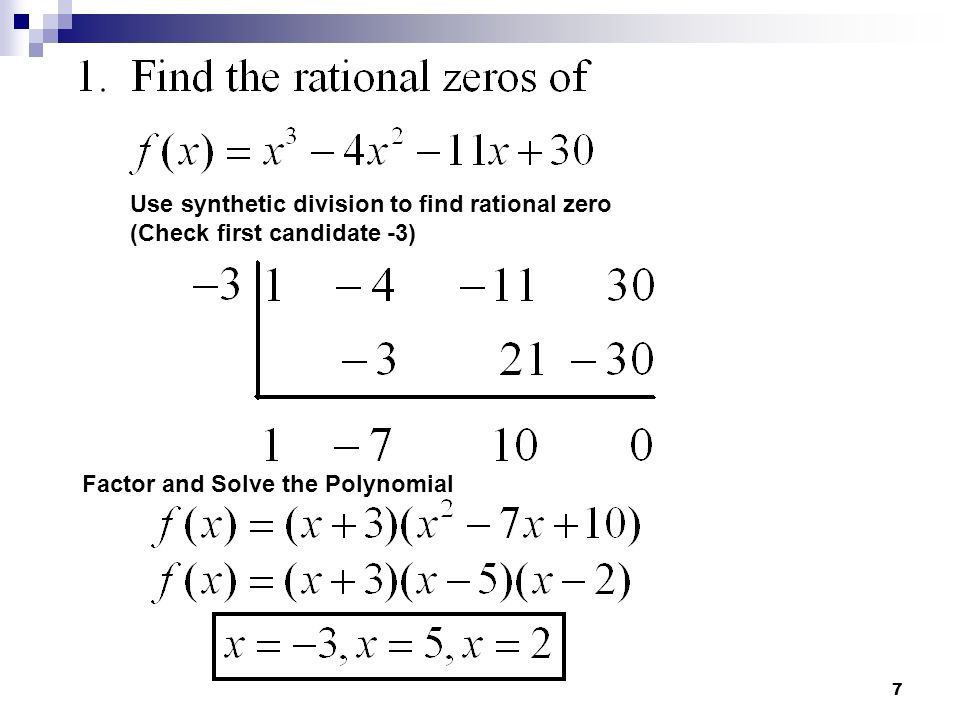
Finding Rational Zeros Day 1 Ppt Video Online Download
Solved Part C Use The Zero From Part B To Find All The Z Chegg Com

Solving Higher Degree Polynomials By Synthetic Division And The Rational Roots Test Youtube
